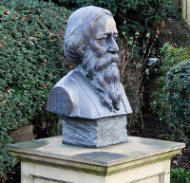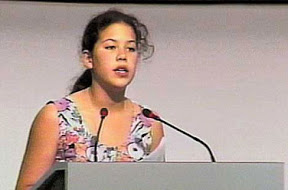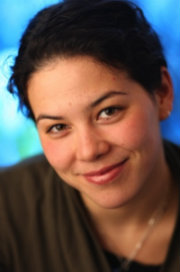Teaching Students About Speaking Truth to Power
A MiddleWeb Blog
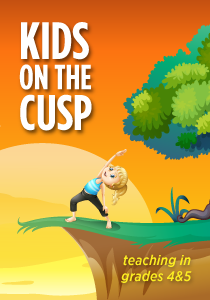
Like all human beings, I have a life that involves scheduling time to enjoy family, focus (happily, I might add) on “work,” and still find some time to relax and unwind.
Being afraid of loss or any other variation of heartache is natural. But I can’t say I’m paralyzed with fear at the thought of my future as a teacher. I do my job well. I’m not afraid of losing it.
What scares me is what I am learning about the world of education as a whole. And, truth be told, I’m a little afraid of speaking out, of telling the world what I see going on, from a teacher’s perspective.
If I tell the world how I feel, then I am saying it out loud. By doing this, the whole thing becomes uncomfortably real. The thing is, if nobody says it out loud, then nobody gets informed. If nobody gets informed, making changes will continue to follow the path of the pendulum.
Finding courage in others’ words
When I am afraid, there is a need for inspiration. Inspiration from many different sources gives me the courage to just keep speaking.
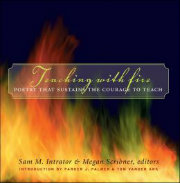
In order to throw a little faith into the mix, as well as some semblance of order (I am a teacher after all), there is a procedure I follow in seeking this inspiration. It’s not very complicated. I grab a book from the coffee table or somewhere nearby, close my eyes, and open it.
Where our minds are without fear
The poem I turned to this time was one written by Rabindranath Tagore entitled “Where the Mind Is Without Fear.” The name sounded familiar. The researcher in me kicked in. It turns out that Mr. Tagore was not only a Nobel Prize winner but a friend of Ghandi. Now there’s another man with a message of inspiration!
Here’s an excerpt from Rabindranath Tagore’s poem:
Where the mind is without fear and the head is held high
Where knowledge is free
Where the world has not been broken up into fragments
By narrow domestic walls
Where words come out from the depth of truth
Where tireless striving stretches its arms towards perfection
Where the clear stream of reason has not lost its way
Into the dreary desert sand of dead habit.
This was no coincidence.
Moments before opening the book, my eyes had been focused on my “blog basket.” I keep it tucked in the corner of my living room for easily accessible inspiration. It is a mishmash of ideas and possibilities. Front and center was a stack of papers, clipped neatly together.
“I’m Not Afraid to Tell the World How I Feel”
Staring out at me was a photocopy of a speech that I have been using sporadically throughout the years with my students. We used it this year as a tool for combining environmental topics with beautiful prose and a look at persuasive writing.
This speech, “I’m Not Afraid to Tell the World How I Feel,” was written by a group of school children from Canada. In 1992, using funds they raised on their own, the four girls (Vanessa Suttie, Morgan Geisler, Michelle Quigg and Severn Cullis-Suzuki) traveled to the United Nations Conference on Environment and Development held in Rio de Janeiro.
Approximately 200 world leaders had gathered to discuss and “find solutions” to the many fears that were growing about our planet, our care of it, and the realities of global sustainability.
Speaking for the group, 12-year old Severn questioned the decisions being made by the grown-ups in her world, as she delivered an incredibly well-written and effective speech to a room full of these grown-ups. Boy, did she lambast them! I was embarrassed to be a grown-up after hearing her speak her truth.
Rewind: Critically thinking about Severn’s brave words in class
With Earth Day coming soon and only three weeks to teach until more PARCC testing returns, I have decided to revisit her speech.
When we first met this courageous young woman, we listened to an audiotape of the speech. Simply listening to it had quite an impact on this year’s group of potential “Severn Cullis-Suzukis.” I’m looking forward to showing them the video clip.
Our previous study of this brave girl’s presentation before an audience of global leaders contained many valuable teaching moments and opportunities to explore our own voices. Here’s how we used our critical thinking skills to formulate our own opinions (supported by some new resources I discovered along the way).
Day 1
- Anticipatory Set – Ask the kids what topics they feel strongly about. Brainstorm a class list. Then, ask them if they would be brave enough to give a speech about one of these topics to a room full of grown-ups…200 or so. After a brief discussion about this possibility, introduce Severn Cullis-Suzuki and give a brief background history.
- Listen to the speech (or watch the video clip). The kids enjoyed this year’s “listening version.” I turned off the classroom lights and invited them to close their eyes and put their heads down (if they were so inclined), so they could just listen.
- Ask a few kids to share what they thought about her speech.
Day 2
- Distribute a copy of the speech to each child. While playing the audio of the speech again, ask the kids to highlight any quotes they find particularly inspiring or thought provoking.
- Distribute the speech response activity and ask the kids choose three quotes to copy down (using proper punctuation and capitalization, of course!)
Day 3
- Write Around activity using my own pre-selected quotes. This is a great way to begin modeling the art of discussion. The kids are asked to respond, not only to the speech, but also to each other’s thoughts about it.
Day 4
- Discussion activity for small groups. The kids use the quotes they chose to have small group discussions. Fish bowl modeling with a small group of kids first is a good way to start them on their way.
Day 5
- Use vocabulary from the speech to write elaborate sentences that contain context clues. (see vocabulary list)
Day 6
- Watch the youtube clip, and experience her bravery one more time (In this year’s case, I am doing this many, many days after we first met Miss Cullis-Suzuki and her determined friends)
- Writing prompt…answering 4 questions using “evidence” to back up our ideas.
 A meaningful Earth Day
A meaningful Earth Day
For Earth Day this year, we will once again meet Severn Cullis-Suzuki. We will watch her speak her mind. I know my students will enjoy seeing her “live.” I know she will inspire them, once again.
And I’m sure she was a little afraid to step up to that podium. She did it anyway. Now there’s a lesson I want to help my students learn. I want them to be inspired to tell the world how they feel.
Severn Cullis-Suzuki links:
Full Transcript of 1992 Rio speech
1992 Transcript and 2012 Democracy Now interview
2012 video of Severn Cullis-Suzuki addressing Green Cross RIO+20 event
Severn Cullis-Suzuki’s current website and bio
Some Other Lesson Plan Ideas:
Putting it Together: Analyzing and Producing Persuasive Text, 7th/8th grade

